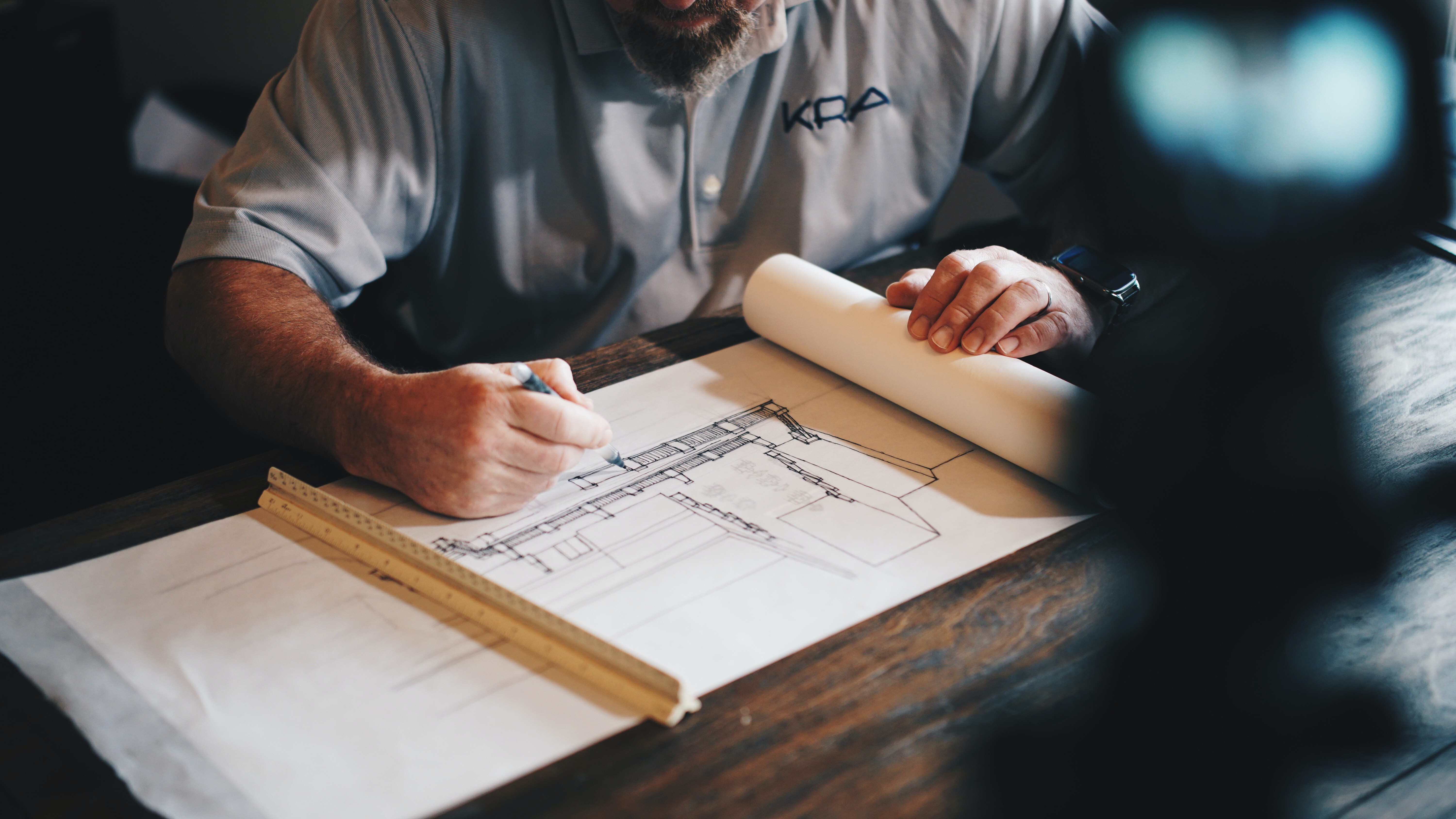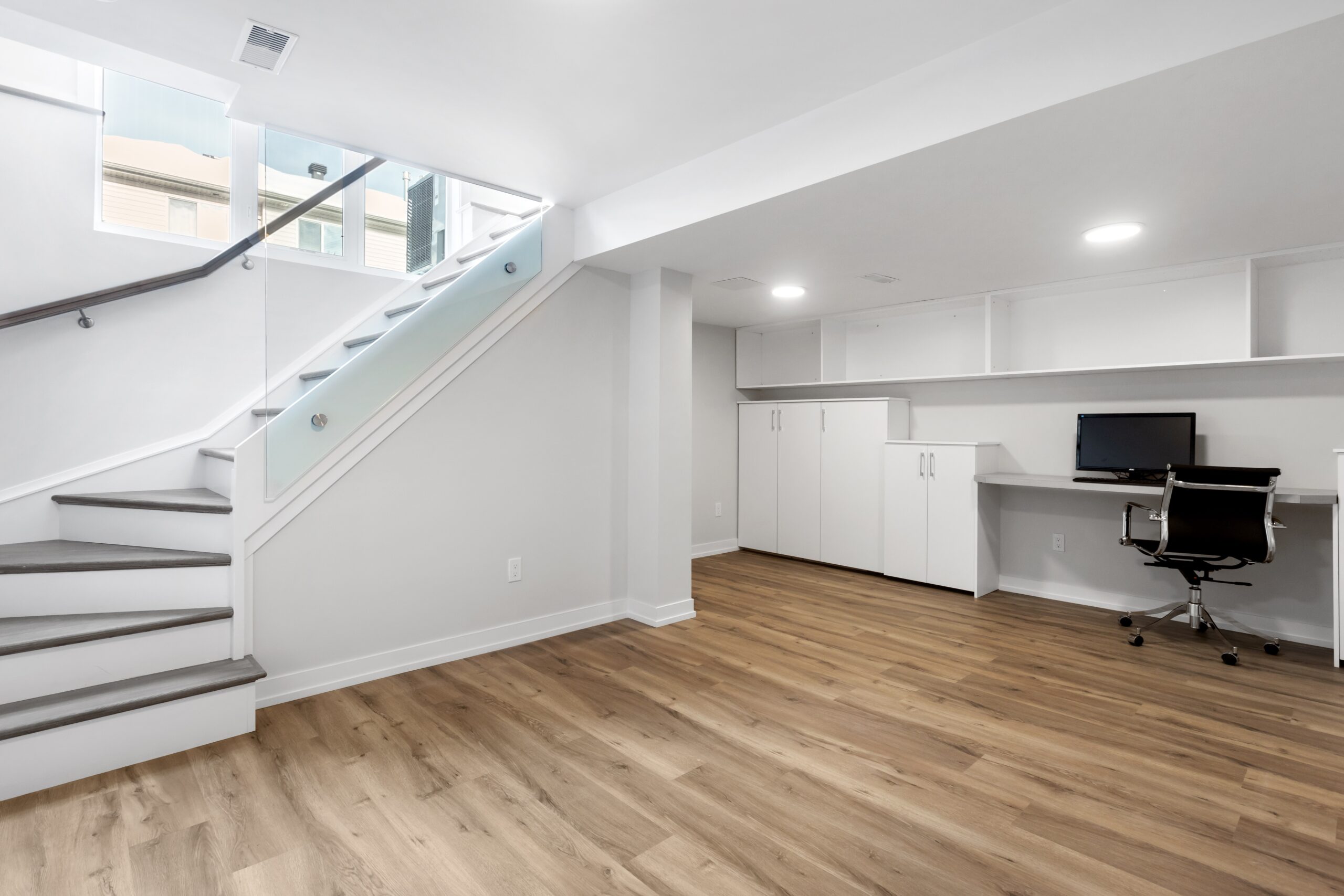Are you considering a home remodel but feeling overwhelmed by the process? Starting a large-scale remodel project can be a daunting task, but with the right guidance, it can also be an exciting and rewarding experience. In this blog post, we will walk you through the steps of starting a home remodel, from the initial planning stage to selecting the right team for the job. Whether you’re looking to add more space to your home, update your kitchen or bathroom, or convert an unused area into a functional living space, this guide will provide you with the tools and information you need to get started on your home remodeling journey.
The Planning Stage

Remodeling your home can be an exciting and rewarding experience, but it can also be a complex and challenging process. Proper planning is essential to ensure that your home remodel meets your needs and fits your budget. In this blog post, we’ll discuss the planning stage of a home remodel and provide tips to help you create a successful remodeling plan.
Define Your Goals and Priorities
Defining your goals and priorities is a crucial first step in the planning stage of a home remodel. This step helps you clarify the purpose and desired outcomes of your remodel. It can also help you avoid making unnecessary changes and spending more money than you need to.
There are several reasons why you might want to remodel your home. You may need more space to accommodate a growing family or to create a dedicated workspace. Alternatively, you may want to update the look and feel of your home to reflect your personal style or modern trends. If you’re planning to sell your home in the future, you may want to increase its value by adding desirable features or making necessary repairs.
Once you have defined your goals, you can prioritize them based on their importance and feasibility. For example, if you need more space but have a limited budget, you may need to focus on reconfiguring existing space rather than adding an extension. Similarly, if you’re planning to sell your home, you may need to focus on making improvements that offer the greatest return on investment.
Prioritizing your goals can help you create a remodeling plan that aligns with your budget and timeline. It can also help you make informed decisions throughout the remodeling process. For example, if you have a limited budget, you may need to choose less expensive materials or make compromises on certain features. Conversely, if you have a flexible budget, you may be able to incorporate more luxurious or custom features into your remodel.
Overall, defining your goals and priorities is an essential part of the planning stage of a home remodel. It helps you clarify your purpose and desired outcomes, prioritize your needs and wants, and create a remodeling plan that aligns with your budget and timeline. By taking the time to define your goals and priorities, you can set yourself up for a successful and satisfying remodeling experience.

Set Your Budget
- Determine your financing options: Before you can set a budget for your remodel, you need to determine how you will finance it. You may be able to use cash savings, a home equity loan or line of credit, or a personal loan. Each option has its pros and cons, and you should research each option carefully to determine which one is right for you.
- Define the scope of your project: The scope of your project will impact your budget. A major renovation that involves moving walls or adding square footage will be more expensive than a cosmetic update that involves painting and new fixtures. Be realistic about what you want to accomplish and how much it will cost.
- Research the costs of materials and labor: You should research the costs of the materials and labor you will need for your remodel. Get quotes from several contractors or suppliers to get a better sense of the costs involved. Keep in mind that prices can vary depending on the quality of materials and the expertise of the contractor.
- Factor in potential cost overruns: It’s important to factor in potential cost overruns when setting your budget. Unexpected problems can arise during a remodel, such as water damage or structural issues, that can increase the cost of the project. You should set aside a contingency fund of 10-20% of your total budget to cover any unexpected expenses.
- Set a realistic budget: Once you have a clear understanding of the financing options, scope of your project, costs of materials and labor, and potential cost overruns, you can set a realistic budget. Make sure your budget aligns with your financial goals and limitations. Don’t forget to account for any ongoing costs, such as mortgage payments, utilities, and property taxes, that may be affected by your remodel. For more information on how to establish and stick to your budget check out our other posts How to Pay for your Remodel
Hire a Professional

Hiring a professional contractor or designer is an important step in the planning stage of a home remodel. A professional can provide expertise and guidance on design choices, construction methods, and budget management. If you are looking for help on knowing how to choose the right design teal check out our previous post here! Here are some benefits of working with a professional:
- Design expertise: A professional designer can help you make informed decisions about design choices, material selections, and color schemes. They can help you choose the right fixtures and finishes that fit your style and budget while also adding value to your home.
- Construction knowledge: A professional contractor can provide expert knowledge of construction methods, building codes, and local regulations. They can help you plan your project timeline and identify potential issues before they become major problems. They can also manage the work of subcontractors and ensure that the project is completed on time and within budget.
- Budget management: A professional can help you manage your budget by providing accurate cost estimates, identifying cost-saving measures, and tracking expenses throughout the project. They can also help you avoid unexpected costs and costly mistakes that can arise when undertaking a major remodeling project.
- Permits and regulations: A professional can help you navigate the permitting process and ensure that your project complies with local building codes and regulations. This can help you avoid costly fines and legal issues that can arise from non-compliance.
- Quality workmanship: A professional can ensure that your remodel is completed with high-quality workmanship and attention to detail. This can help you avoid the need for costly repairs or renovations in the future.
Create a Design Plan

Once you’ve defined your goals, set your budget, and hired a professional, it’s time to create a design plan. Your design plan should include a detailed scope of work, a timeline, and a list of materials and finishes. Your professional can help you create a design plan that meets your needs and aligns with your budget.
- Detailed scope of work: A detailed scope of work outlines the specific tasks and activities that will be included in your home remodel. This can include demolition, electrical and plumbing work, framing, drywall, painting, flooring, and installation of fixtures and finishes. A professional contractor or designer can help you create a detailed scope of work that reflects your goals and priorities.
- Timeline: A timeline is a critical component of your design plan that outlines the project schedule from start to finish. This includes specific start and end dates for each task and milestone, such as demolition, framing, electrical work, plumbing work, and finishing work. A timeline can help you stay on track and ensure that your project is completed on time.
- List of materials and finishes: Your design plan should also include a list of materials and finishes that you plan to use in your home remodel. This can include flooring, countertops, cabinets, lighting fixtures, plumbing fixtures, and appliances. A detailed list of materials and finishes can help you stay within your budget and ensure that you get the look and feel you want for your home.
- Flexibility: Your design plan should also allow for some flexibility to accommodate unforeseen issues or changes that may arise during the course of the project. This can include changes to the scope of work, adjustments to the timeline, or modifications to materials and finishes. A professional contractor or designer can help you build flexibility into your design plan while ensuring that your goals and priorities are still met.
Prepare for the Construction Phase
The planning stage of your home remodel should also include preparing for the construction phase. This includes obtaining necessary permits, setting up a construction schedule, and creating a plan for managing the construction process. You should also consider factors such as safety, access, and logistics. Preparing for the construction phase will help ensure that your remodeling project stays on track and is completed successfully.
- Obtaining necessary permits: Depending on the scope of your home remodel, you may need to obtain various permits from your local government. This can include building permits, electrical permits, plumbing permits, and more. Your professional contractor or designer can help you determine which permits you need and can help you navigate the permitting process.
- Setting up a construction schedule: A construction schedule is a timeline that outlines the specific tasks and activities that will be completed during the construction phase of your home remodel. This includes start and end dates for each task, such as demolition, framing, electrical work, plumbing work, and finishing work. A construction schedule can help you stay on track and ensure that your project is completed on time.
- Creating a plan for managing the construction process: Managing the construction process involves coordinating with subcontractors, ensuring that work is completed on time and within budget, and addressing any issues or concerns that may arise. Your professional contractor or designer can help you create a plan for managing the construction process and can provide guidance on best practices for project management.
- Considering safety, access, and logistics: Safety is a top priority during the construction phase of your home remodel. You should consider factors such as access to your home, temporary storage for materials and equipment, and how to minimize disruption to your daily life during construction. Your professional contractor or designer can help you develop a plan that prioritizes safety and minimizes disruption.
In Conclusion
In conclusion, the planning stage is a critical component of any home remodel. It sets the foundation for a successful project by defining goals, setting budgets, creating a design plan, and preparing for the construction phase. By working with a professional contractor or designer, homeowners can ensure that their remodeling project meets their needs, stays within budget, and is completed on time.
At the construction phase, it’s essential to prepare for safety, access, and logistics, obtain necessary permits, and set up a construction schedule. These steps will help homeowners minimize disruption to their daily lives and ensure that their project is completed successfully.
If you’re planning a home remodel and need assistance with the planning and construction process, download our FREE home renovation tool kit and email challenge at https://www.remodellaunchkit.com/




